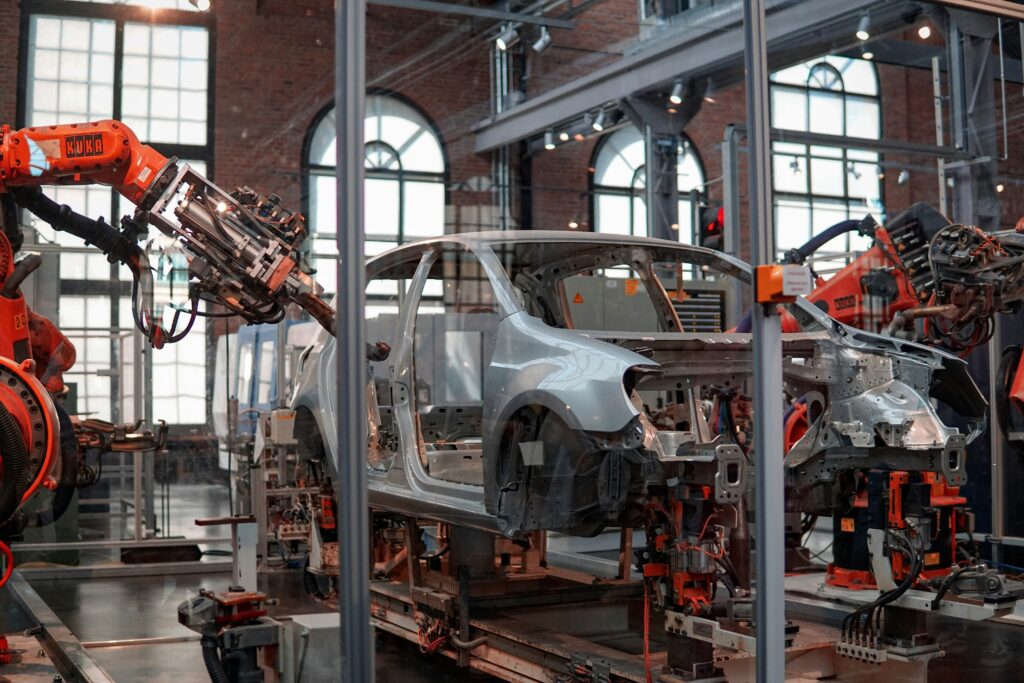
How Automation is Driving The Future of Automotive Manufacturing
The automotive industry is driving automation by having the largest number of robots working in factories around the world — operational stock hit a new record of about one million units, according to the International Federation of Robotics (IFR). With the prevalence of automation rising in the automotive industry, the benefits associated with its use in manufacturing cannot be understated. With advantages that work to bring productivity and efficiency all around, advancements in technology such as the integration of artificial intelligence underline the many innovative applications to come.
Exploring the current advantages of automation
“The automotive industry effectively invented automated manufacturing,” notes Marina Bill, the President of the IFR. “Today, robots are playing a vital role in enabling this industry’s transition from combustion engines to electric power. Robotic automation helps car manufacturers manage the wholesale changes to long-established manufacturing methods and technologies.” The IFR goes on to highlight the recent density of robots in the automotive industry — in the Republic of Korea, 2,867 industrial robots per 10,000 employees were in operation in 2021, while Germany had 1,500 units followed by the United States with 1,457 units.
Automation plays a variety of roles in automotive manufacturing, including taking on tasks such as screw driving, windshield installation, and wheel mounting. Automate highlights one example of a valuable role that automation plays in the manufacturing process, via an automated vehicle floor plug insertion system developed by FANUC for General Motors. As a result, the system effectively helps relieve workers from “the ergonomic strain of the manual process and improves production time.” Apart from assembly, Robotics and Automation News notes additional uses for automation in manufacturing include car painting, welding, polishing and material removal, and quality inspection. Regarding the benefits, automation in automotive manufacturing is known to have a wide variety of advantages that heighten productivity in immense ways — including lowering costs, improving accuracy and safety, and amping up efficiency.
Increasing automation highlights a productive future
According to CBT News, automakers are “likely to introduce more robots and other forms of automation over time.” Currently, CBT notes that many robots on production lines are called ‘cobots,’ as they work alongside workers in order to complete tasks that are physically demanding or more challenging to do — Ford, for example, has “at least 100 of these cobots across two dozen of their plants around the world.” Automakers are already planning for increased automation in the future in order to achieve various goals. Tesla is a pioneer regarding factory automation and robots; Elon Musk, for example, has said that introducing more automated equipment at Tesla as part of a goal to cut the costs of making future models by 50%, according to CBT News.
To further underline the presence of automation in auto manufacturing, a 2021 article from The Korea Economic Daily Global Edition highlights the use of robots and artificial intelligence (AI) by Kia Corp., South Korea’s second-largest automaker. According to the article, the company had released a video “showing a highly automated production line of the all-electric mid-size crossover utility vehicle (CUV) at a smart factory powered by artificial intelligence and robot technology.” Crossovers have risen in popularity in the US, with the vehicle featuring an SUV-style body based on a car (rather than a truck platform), therefore using unit-body construction. Today’s crossovers offer a variety of features, with top-rated crossovers offering those such as a spacious interior and a smooth engine.
Innovation foreshadows advancements to come
In addition to simply expanding automation efforts throughout auto manufacturing, ‘smart manufacturing’ employs technology in addition to automation. Also called Industry 4.0, RT Insights notes that data-driven decision-making and predictive maintenance are just the beginning of the advantages associated with smart manufacturing, with benefits extending to areas such as energy efficiency and supply chain optimization. “The resulting factors of having a smart manufacturing set-up are efficiency, production optimization, trackability, quick turnaround during downtime, safer working conditions, and responsible manufacturing,” notes Mobility Outlook.
AI and machine learning (ML) are both components that are driving the future of smart manufacturing, with Mobility Outlook explaining that AI systems analyze data sets and historical records of Internet of Things (IoT) devices. As a result, AI can identify patterns and trends which would otherwise go unnoticed by workers. ML algorithms, on the other hand, can “learn from data, make predictions, and make suggestions to improve manufacturing processes.” Predictive maintenance can also make a major difference in the future of automotive manufacturing, with the analysis of data allowing for minimized repair costs and proactive maintenance. Furthermore, Mobility Outlook highlights the value of quality control systems powered by AI — with this technology, defects can be detected in real-time, allowing for waste reduction and improved product quality across the board.
Automation brings a variety of benefits to automotive manufacturing. While automakers are already making use of the technology, technological advancements like AI are driving the future of ‘smart manufacturing,’ effectively foreshadowing a range of advantages to come.
*This article is written by Lottie Westfield. Lottie spent more than a decade working in quality management in the automotive sector before taking a step back to start a family. She has since reconnected with her first love of writing and enjoys contributing to a range of publications, both print and online.




